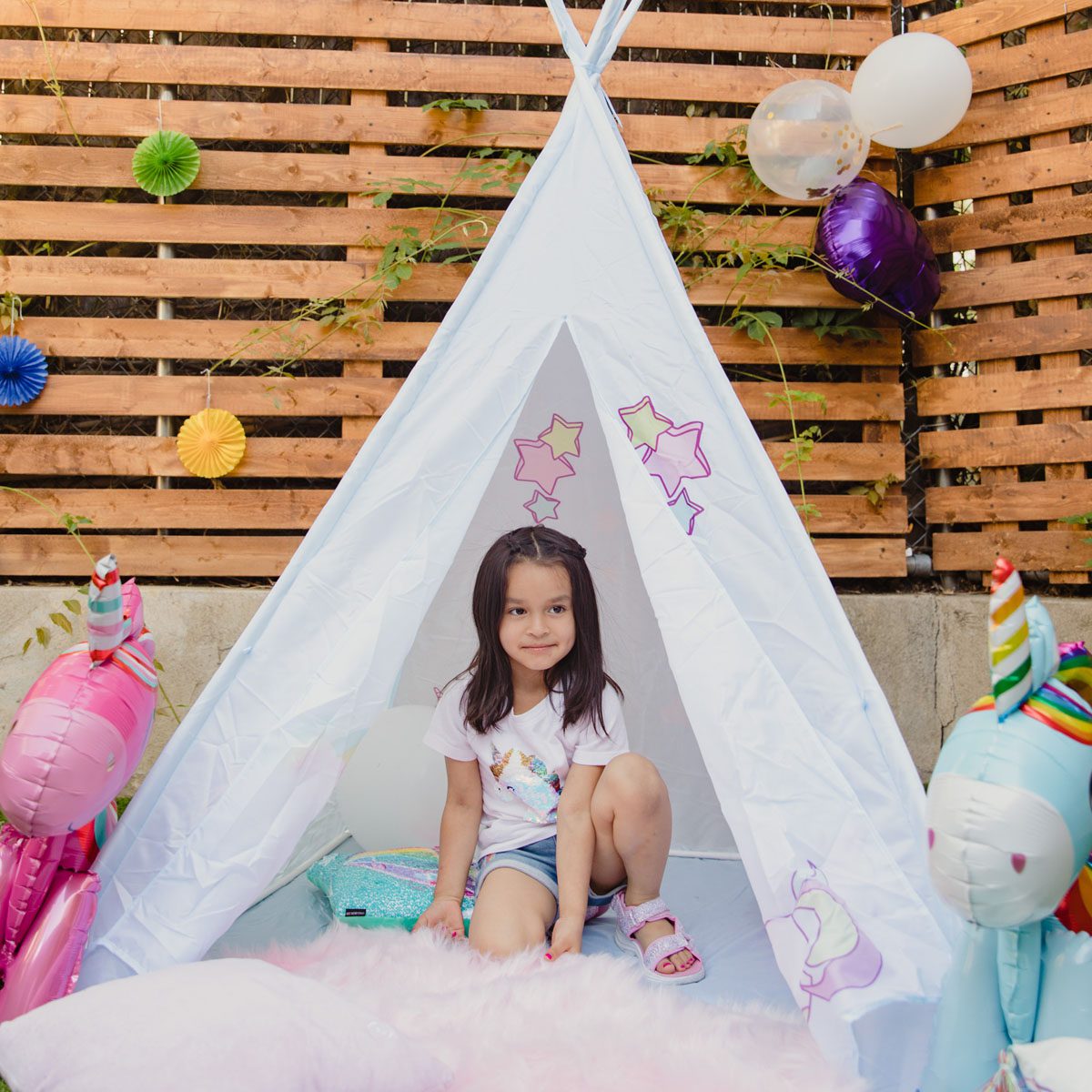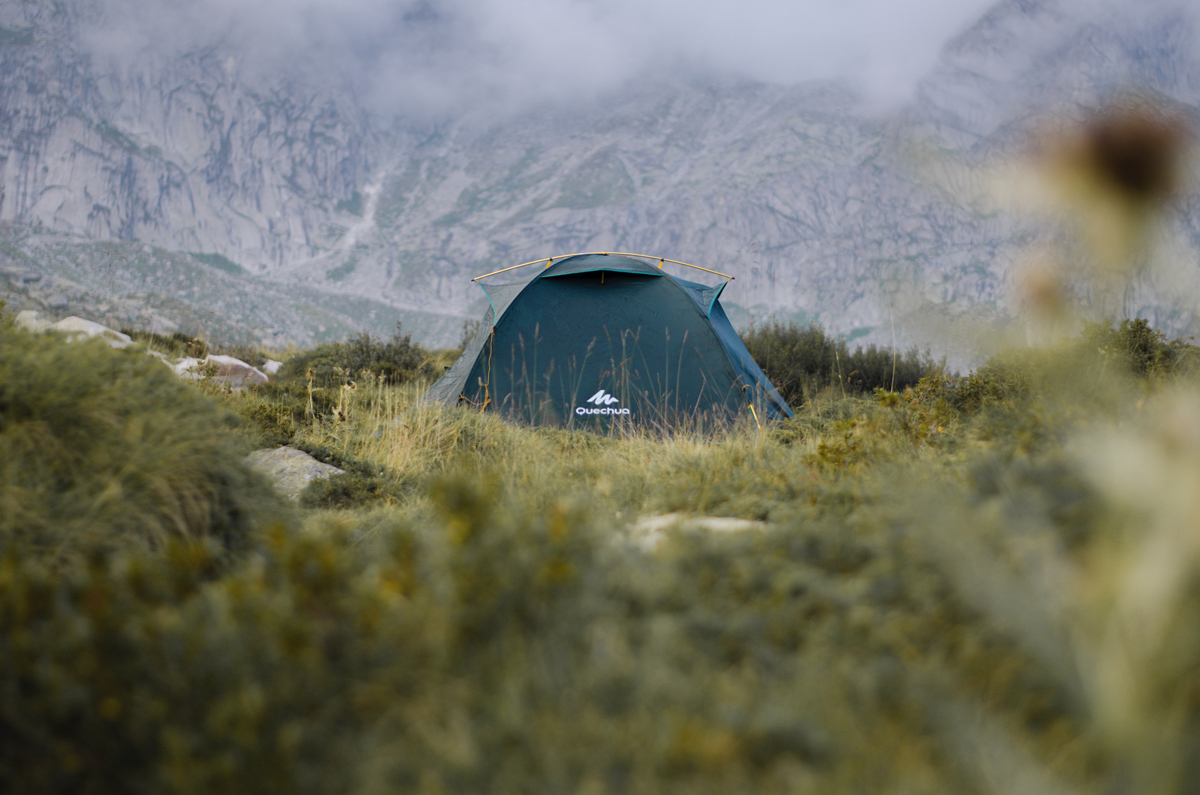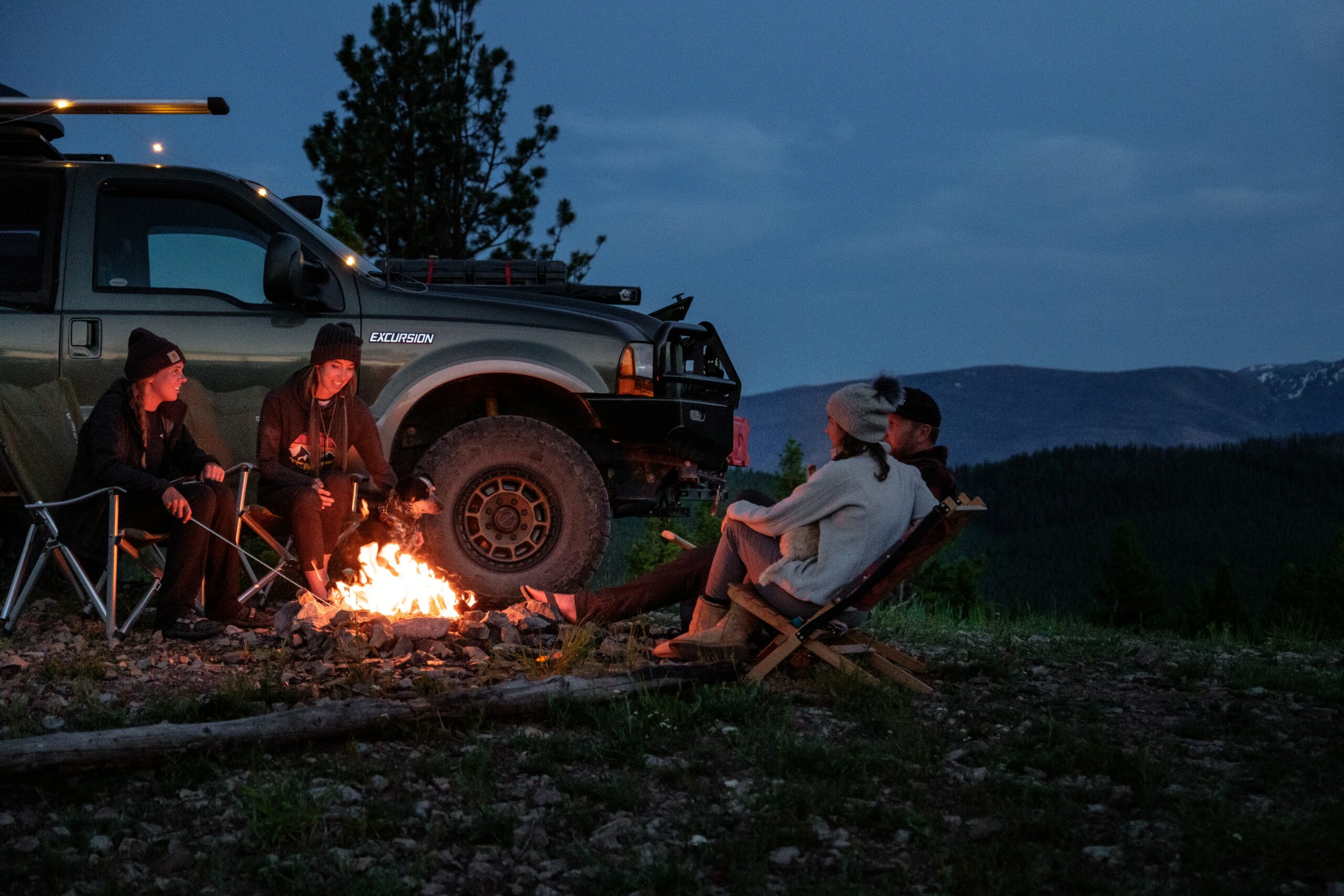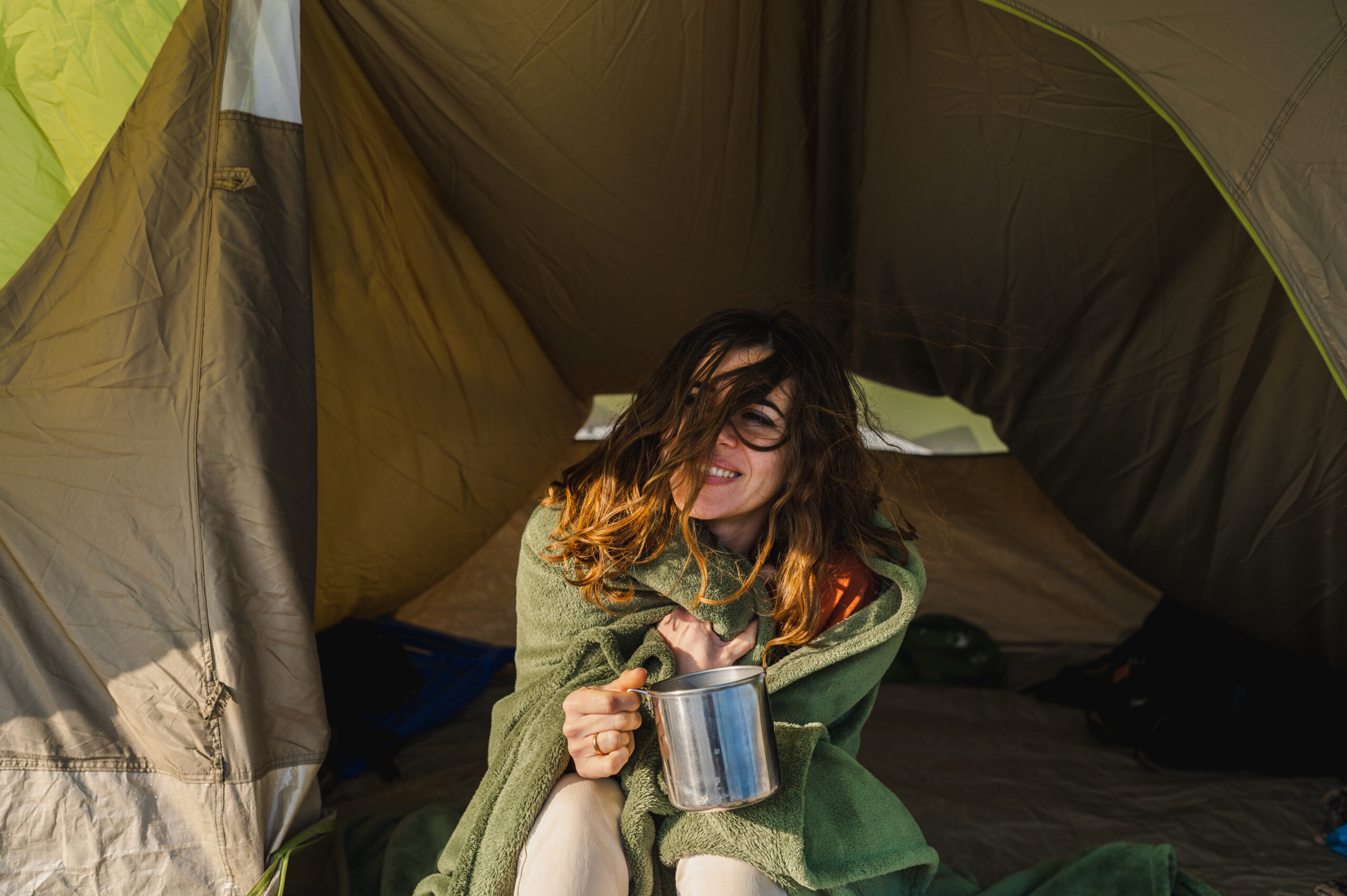Phone
+1-650-666-095
Contact E-mail
[email protected]
Address
16192 Coastal Hwy, Lewes, DE 19958-3608
14 Tips For Camping In Hot Weather You Need To Know


When camping in hot weather, it’s important to plan and prepare ahead of time to ensure a safe and enjoyable experience. This may involve packing appropriate gear, choosing the right campsite, and staying hydrated. In this article, we’ll explore some tips for camping in hot weather so that you can make the most of your outdoor adventure while staying safe and comfortable.
Summer Camping Essentials And Tips For Camping In Hot Weather
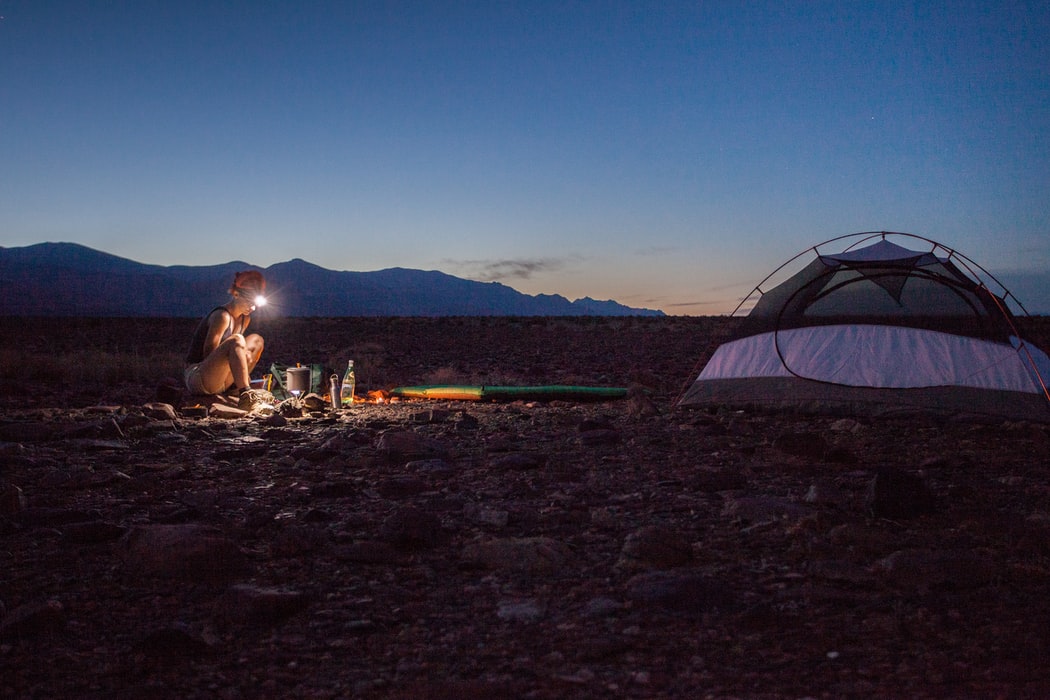

Summer camping can be a great experience but requires careful planning and preparation to ensure a safe and enjoyable trip. Here are some summer camping essentials and tips for camping in hot weather:
1. Lightweight Clothing
Choose lightweight, breathable clothing that keeps you cool and comfortable in hot weather. Use breathable fabrics such as cotton, linen, or moisture-wicking materials.
2. Sun Protection

Wear sunscreen with a high SPF, a wide-brimmed hat, and sunglasses to protect your skin and eyes from the sun’s harmful rays. Apply sunscreen with at least 30 SPF or higher before heading outside, and reapply often. Sunburns can make it harder for your body to cool down.
3. Hydration
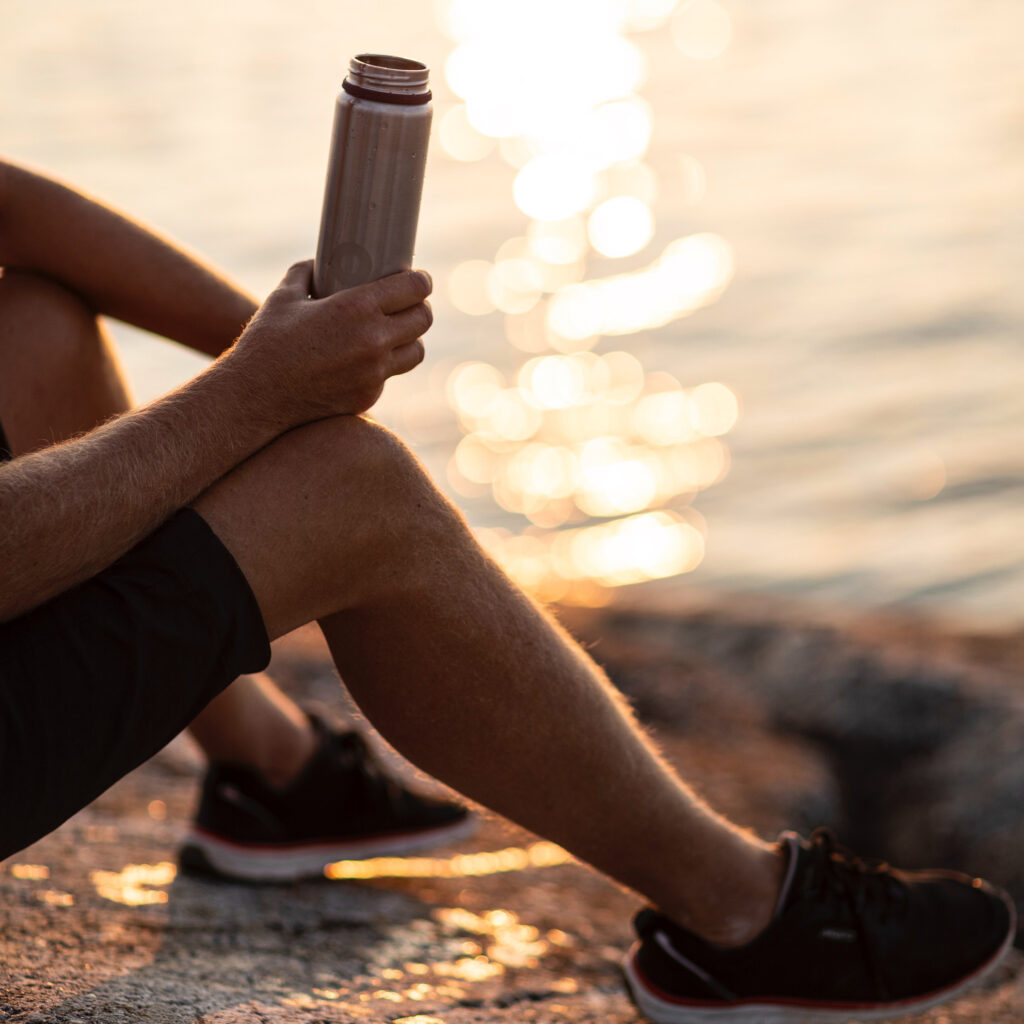

Bring plenty of water and electrolyte-rich drinks to stay hydrated in the heat. Pack a hydration bladder or water filter to ensure a steady clean water supply. You may need more hydration especially if you go on hikes and temperatures start to rise. An all-in hydration backpack that includes a bladder and a backpack will make a difference in your adventure. You can easily have hands-free sips of water while you’re on the go by biting and sucking the mouthpiece.
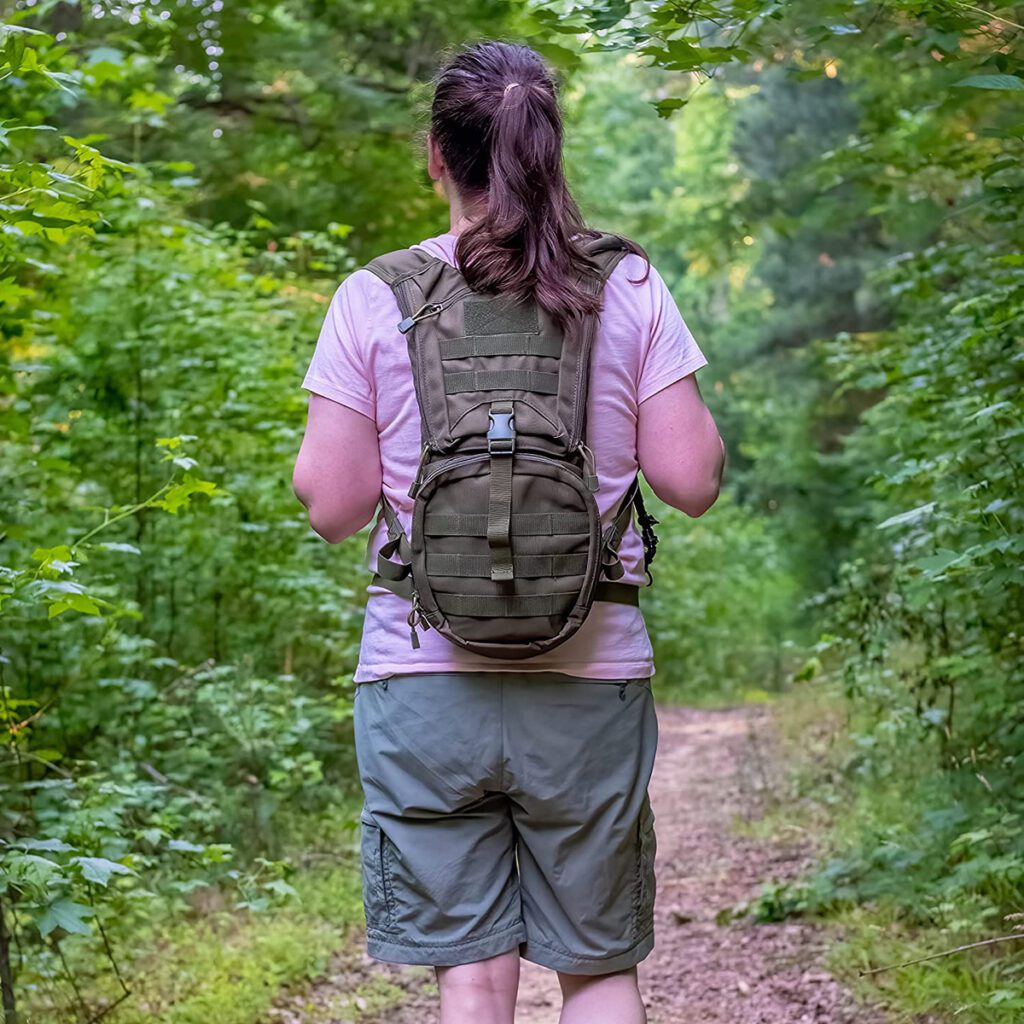

The KAMUI Hydration Backpack includes a 3L water reservoir that ensures you stay hydrated throughout the day. It has additional pockets for your other essentials and a MOLLE webbing that allows you to attach additional items you might need while wandering off your campsite.
4. Shade
Look for campsites with natural shade or bring a canopy or tarp to create your shade. This will provide a respite from the sun and help keep you cool. Set your tent in a shady spot, and take breaks in the shade during the hottest parts of the day.
5. Cooling Products
Consider bringing cooling products such as misting fans, ice packs, or cooling towels to help you stay cool.
6. Proper Food Storage
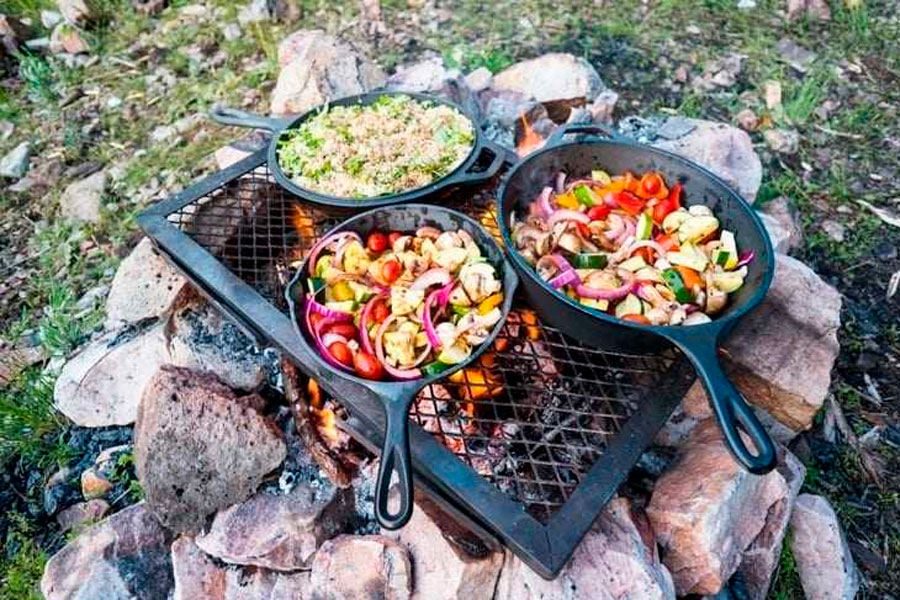

Store food properly to prevent spoilage and foodborne illness. This means keeping perishable items in a cooler with plenty of ice and avoiding leaving food in the sun.
7. Time Management
Plan activities for early morning or late afternoon when temperatures are cooler. This will help prevent heat exhaustion or heatstroke.
8. Insect Repellent
Bring bug spray to protect against mosquitoes and other biting insects. Mosquitoes are more active in warm weather and can transmit diseases such as the West Nile virus and Zika virus.
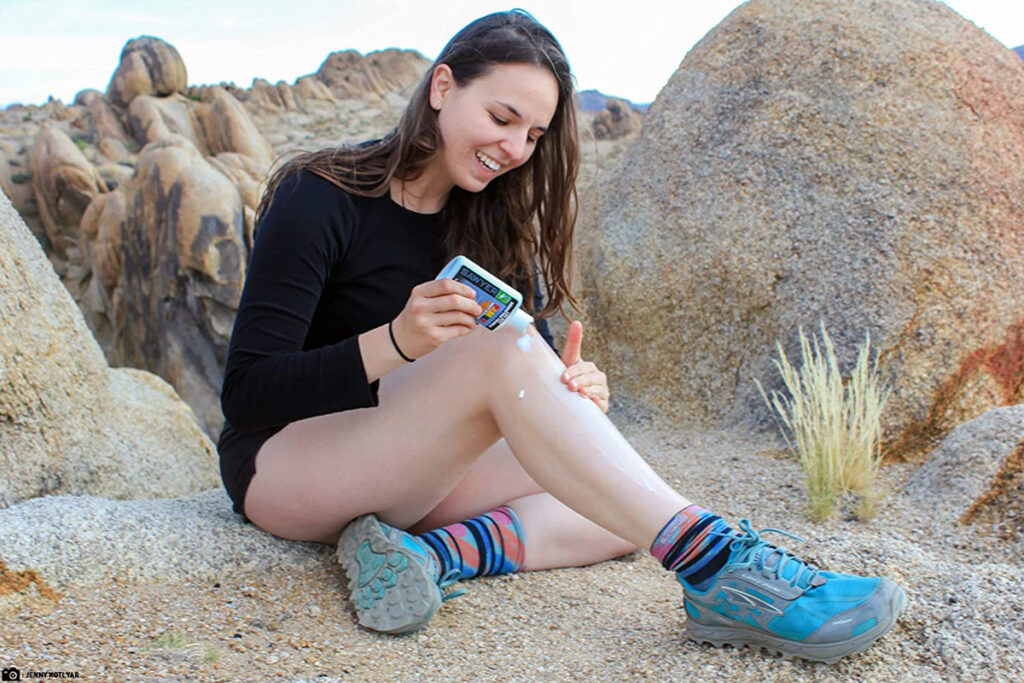

9. Emergency Preparedness
Be prepared for emergencies by bringing a first aid kit, a charged cell phone and knowing the location of the nearest medical facility.
10. Proper Tent Placement
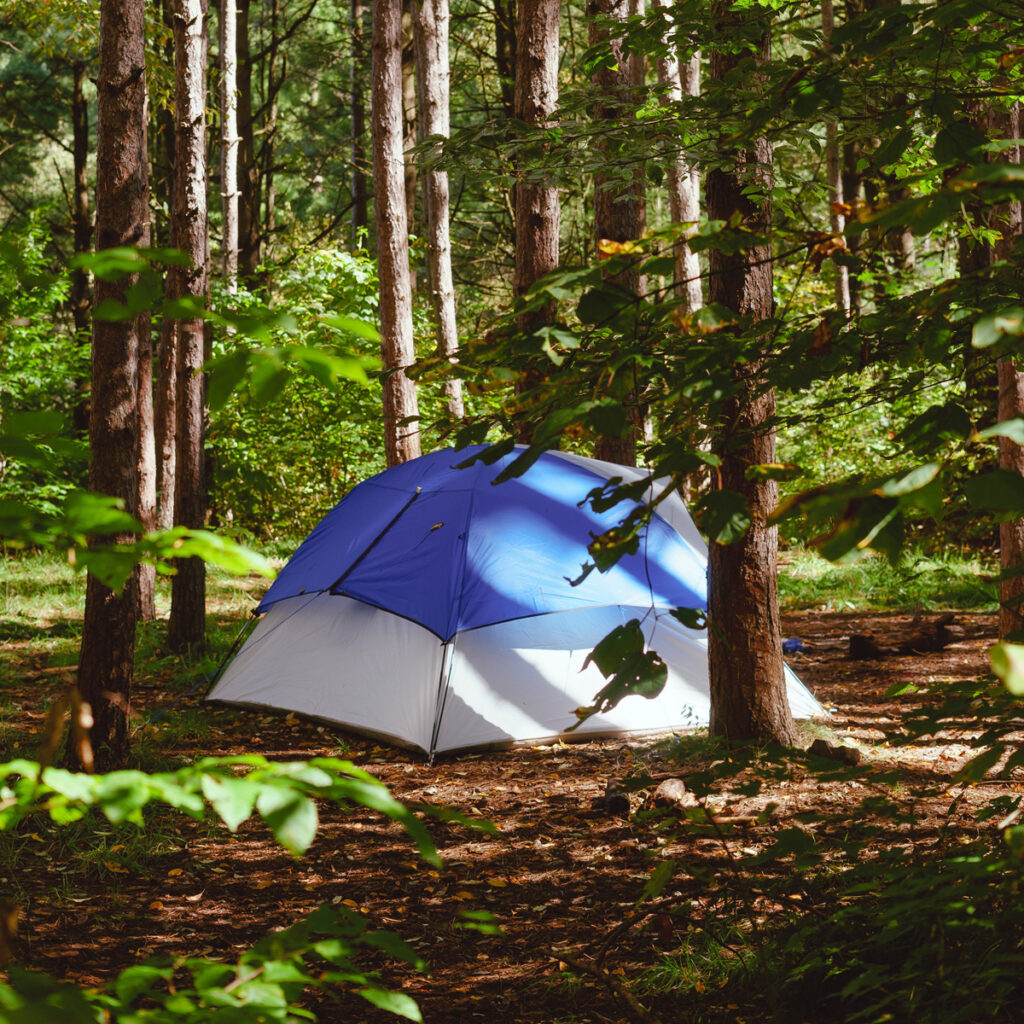

Set up your tent in a shady spot to keep it cooler during the day. If possible, camp near a body of water, which can help lower the temperature. Choose a tent made from breathable materials that allow air to circulate, helping to keep you cool.
11. Lightweight Sleeping Bag
Use a lightweight sleeping bag that is appropriate for the temperature. Sleeping bags designed for summer camping are typically lighter and have more ventilation.
12. Campfire Safety


Check for fire restrictions in the area where you are camping. If fires are allowed, keep them small and contained, and never leave a fire unattended. Use a camp stove or portable grill instead of building a fire. This will help prevent wildfires and keep you cooler since you won’t stand over a fire.
13. Weather Monitoring
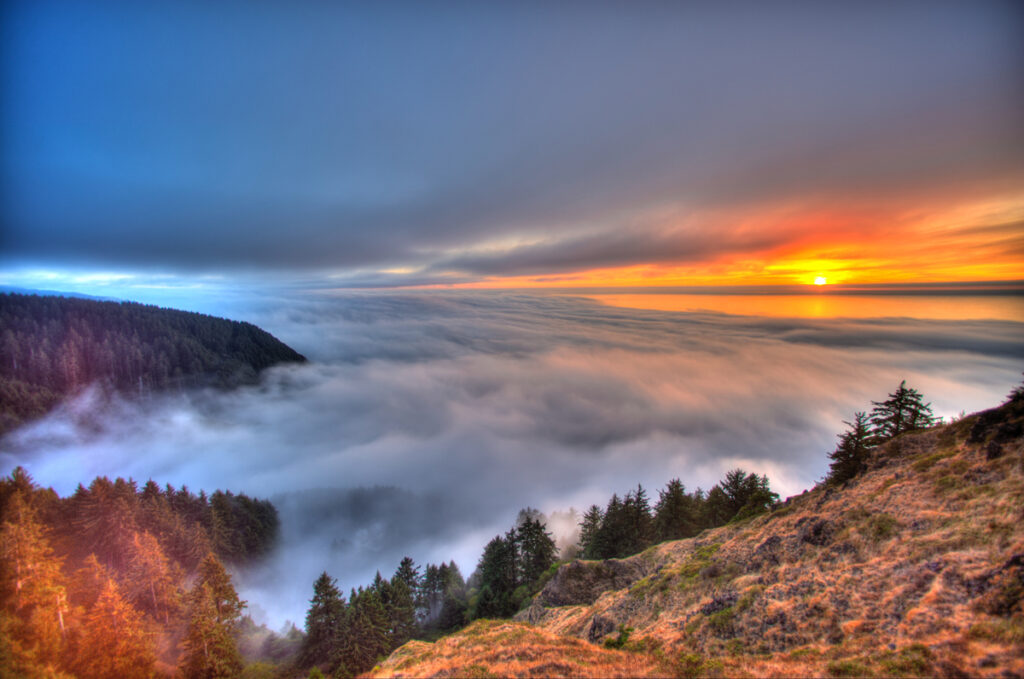

Keep an eye on the weather forecast and be prepared for sudden temperature, humidity, or precipitation changes. Pack rain gear and warm clothing in case of unexpected weather.
14. Outdoor Activities
Plan outdoor activities appropriate for the temperature, such as swimming, hiking, or fishing. Take breaks often and don’t overexert yourself.
Extra Tips For Camping In The Heat
Camping in hot weather can be both exciting and challenging. While the warm temperatures can provide the perfect backdrop for outdoor activities and a great opportunity to soak up some sun, it can also be uncomfortable and dangerous if proper precautions are not taken.
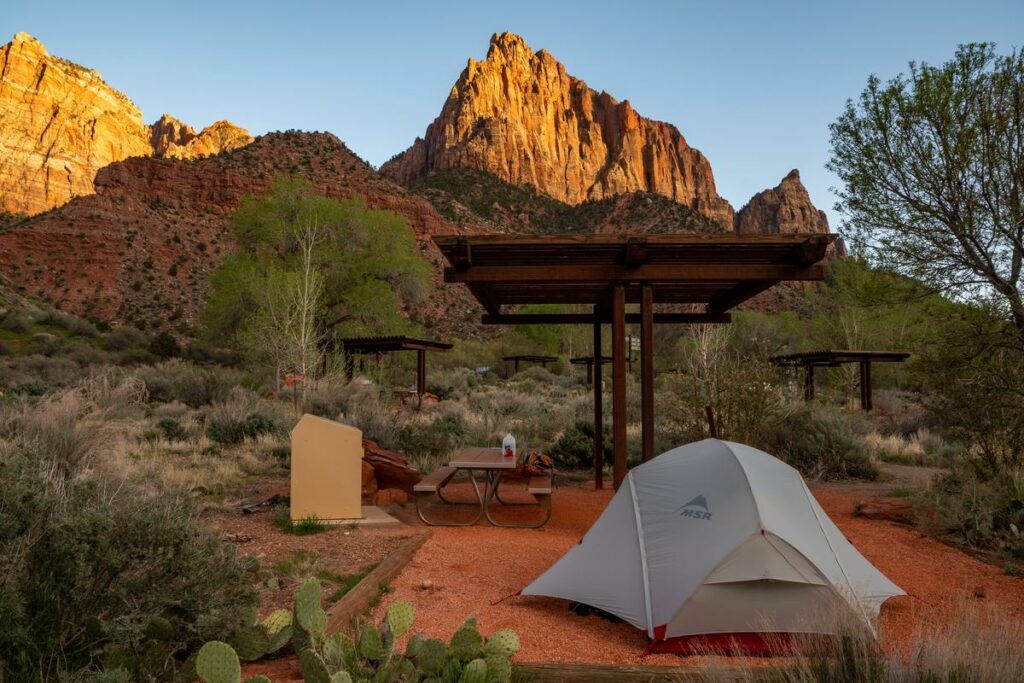

- If you’re going to be camping in the heat, it’s best to find a way to distract yourself and take your mind off of the heat. Find something you enjoy, whether fishing or playing cards, and use your time as camp lag time.
- Be aware of the signs of heat exhaustion and heat stroke, such as headache, dizziness, nausea, and confusion. Seek medical attention immediately if you or someone in your group experiences these symptoms.
- Make sure to pitch your tent in a way that allows for maximum airflow. Keep the door and windows open to allow the air to circulate.
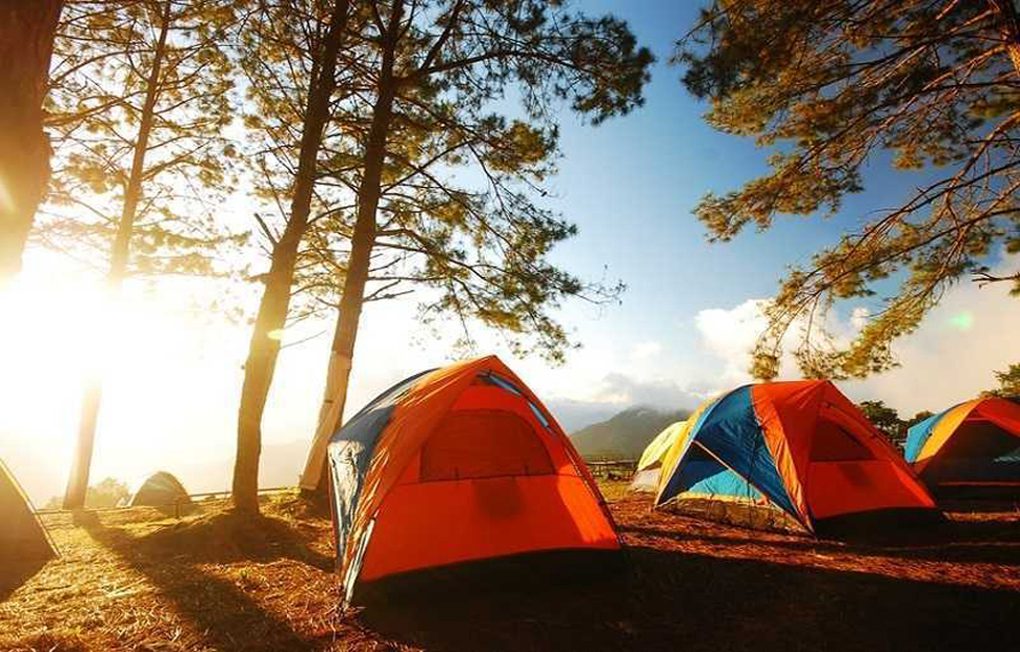

- When choosing a campsite, try to find a shaded spot with a natural breeze. This will help keep your tent cool.
- Fill a spray bottle with cool water and mist yourself or the inside of the tent to create a cool mist.
By following these additional tips, you can have a safe and enjoyable camping experience in hot weather. Remember to plan, stay hydrated, and take precautions to protect yourself from the sun and heat. With the proper preparation, you can make the most of your summer camping trip and create lasting memories.
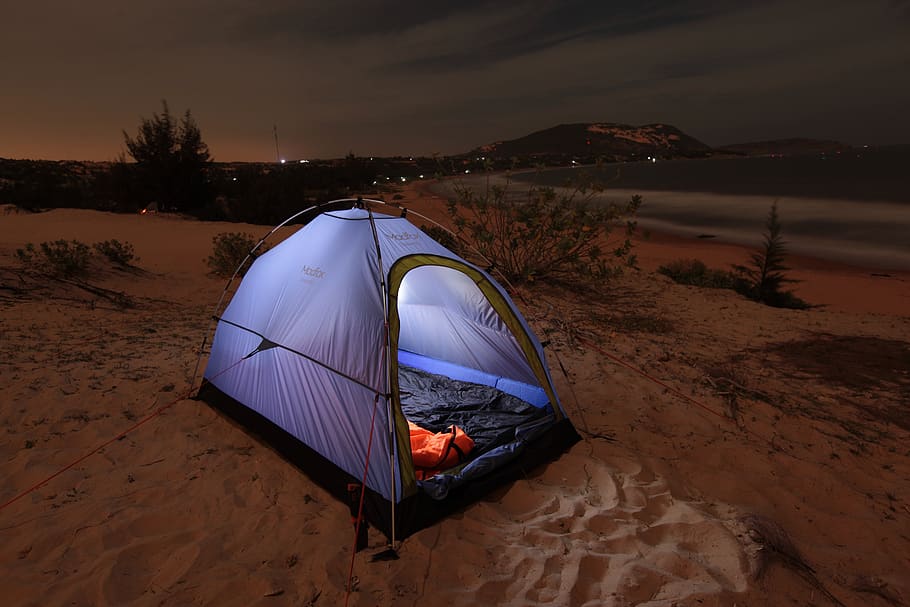

How Hot Is Too Hot For Camping?
Most campers will not go camping or pack their camp if the weather reaches 95 degrees Fahrenheit during the day or 80 degrees Fahrenheit during the night. While some people may find this temperature too uncomfortable, there are still ways to enjoy camping in such high temperatures.
Regarding camping, the weather can make or break your experience. Too hot and you’ll be sweating and uncomfortable; too cold and you’ll be shivering and miserable. So, how hot is too hot for camping? That depends on various factors, such as the type of camping you’re doing, your gear, and how much shade and ventilation are available.
What Bedding To Use For Hot Weather Camping?
When camping in hot weather, choosing bedding appropriate for the temperature is important to help you stay relaxed and comfortable. Here are some bedding options to consider for hot-weather camping:


- Sleeping Pad: Use a sleeping pad from breathable materials such as mesh or nylon. These materials allow air to circulate and prevent heat buildup under your body.
- Hammock: Consider using a hammock for sleeping, as it allows air to circulate your body and provides a more excellent sleeping surface.
Overall, the key is choosing bedding made from breathable materials that allow for good air circulation. This will help prevent heat buildup and make for a more comfortable night’s sleep in hot weather.
How Do You Keep A Tent Cool In The Desert?
Keeping a tent cool in the desert can be a challenge, but there are several things you can do to help reduce the temperature inside your tent. First, look for a campsite that is shaded, if possible. Set up your tent in a location protected from the sun, such as under a tree or in a canyon.
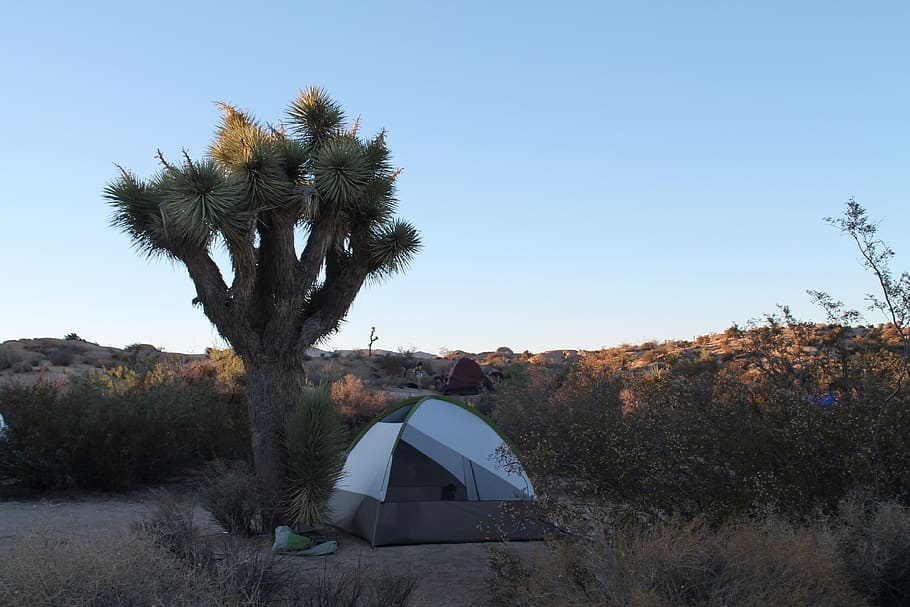

Set up a sunshade or tarp over your tent to provide additional shade and reduce the amount of sunlight that enters your tent. Make sure your tent is properly ventilated. Open windows, vents, and doors to allow air to circulate and create a breeze inside your tent.
Most people cover their tent with a reflective material such as a space blanket or tarp to reflect sunlight away. You can also bring a portable fan or battery-powered fan to help circulate the air and create a breeze inside your tent.
You can also design your DIY air conditioner to lower the temperature inside your tent. Watch this video for the full details on how to create one.
Conclusion
Camping in hot weather can be a fun and rewarding experience, but it’s important to be prepared with the right gear and follow some essential tips to stay safe and comfortable. The tips for camping in hot weather are a must-know; from choosing lightweight and breathable clothing to bringing plenty of water and staying in the shade, there are many ways to ensure a successful camping trip.
Remember to prioritize your health and safety by staying hydrated, avoiding prolonged sun exposure, and taking breaks as needed. You can have an enjoyable and memorable summer camping experience with the right mindset and preparation.

